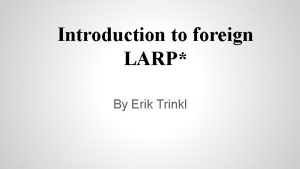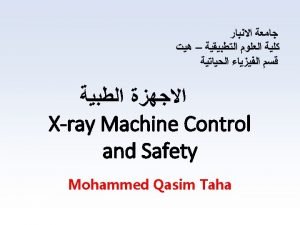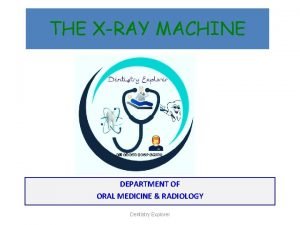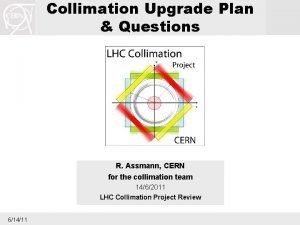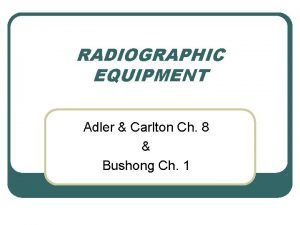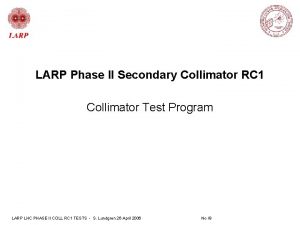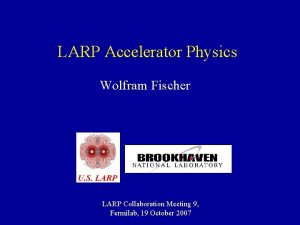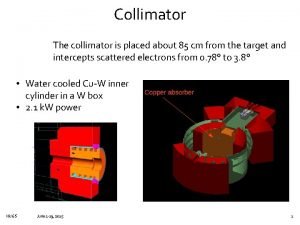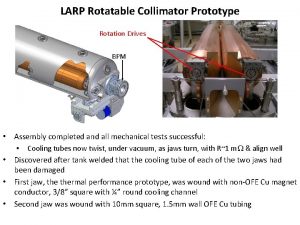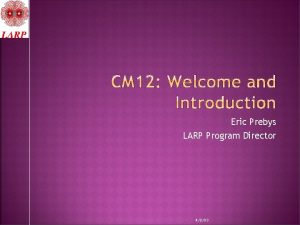LARP Collimator Status ILC RD Status Meeting 2006







- Slides: 7

LARP Collimator Status ILC R&D Status Meeting 2006 -02 -27 T. Markiewicz

Two Main Complaints Made by Review Committee 2005 -12 -15 • 1 a. Is the design mature enough to proceed to construct RC 1? – Fully realistic designs of supports and aperture stop are needed for the single jaw thermal test and RC 1. These are the hardest parts of the collimator mechanical design and should be validated by the single jaw and RC 1 tests. Verification of ANSYS thermal model seems secondary to testing the supports as soon as possible. • 1 c. Have alternative materials and designs been adequately explored? – Many materials have been examined, choice of Cu is sound – Recommend considering a bimetallic strong back design with an inner water cooled steel cylinder and outer copper cylinder. This has promise to reduce deflection during beam heating.

Progress Since Last Report on 2005 -12 -16 • FLUKA (Lew Keller) – Implement cylinder jaw geometry within the “classic” FLUKA input file we have been using • as opposed to newer complicated but flexible approach now used exclusively at CERN • Informal statement: “Energy deposition about the same” – Match FLUKA and ANSYS grid sizes for better estimates of damage & plastification in beam abort accident and 12 minute lifetime cases • General discussion of Fermilab damaged collimators, energy absorbed in incident & relevance to LHC design

New Photos of Fermilab Collimators by Terry Anderson The beam grove is probably on the order of a 1/32” deep and the main part of the spatter extends a ½” or more to either side of the grove. The damaged collimating surface is a vertical surface. The largest of the splatter beads is on the order of 1/16”.

New Photos of Fermilab Collimators by Terry Anderson (2) The beam grove is probably on the order of a 1/16” deep and the main part of the spatter extends 1” or more to either side of the grove. The damaged collimating surface is a vertical surface. The largest of the splatter beads is on the order of 1/16”. The splatter extends to all surfaces as can be seen in figures 3 & 4. On the lower left of figure 4 “spider webbing” or filaments can be seen. (3) (4)

ANSYS • Adding SS Core as suggested does not seem to help deflection – Adding a solid copper core DOES help • Working to fine tune cell size for better understanding of accident case

Errata • Yunhai Cai lost to LARP due to PEP-II • Terry Anderson virtual hire currently snagged in HR negotiations – April 1, 2006 is/was hoped for arrival date • LHC schedule slippage soon (April/May) to be announced – “Collisions 1 Aug 2007” to become “circulating beam in 2007” – Will affect out timescale • LHC Phase I collimator jaw assemblies late (& overrunning) – First assemble expected 7 March 2006 • Collimator control plans received lots of heat @ Jan. LHC review • CERN Review of “Phase I” planned for May-June – Will probably include first report to CERN on SLAC activities

